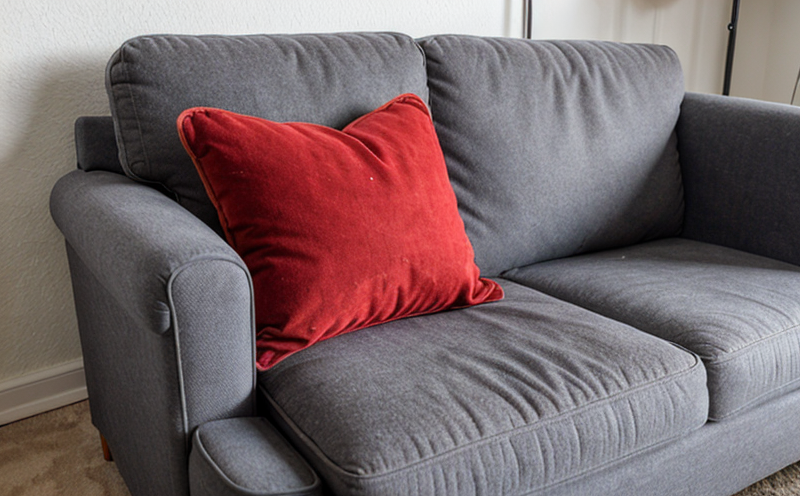ISO 3385 Determination of Loss of Height in Upholstery Cushions After Fatigue Testing
The determination of loss of height (LOH) in upholstery cushions after fatigue testing is crucial for ensuring the durability and performance of furniture products. This test aligns with ISO 3385, which specifies the procedure to determine LOH as a means of assessing the resilience and quality of upholstery cushions.
The process involves subjecting cushion samples to repetitive loading cycles simulating real-world use conditions, such as sitting and standing, to replicate the stresses that the product will encounter over its lifespan. This fatigue testing helps manufacturers identify any potential issues with the design or materials before the product reaches the market, ensuring that it meets both regulatory standards and consumer expectations.
During ISO 3385 testing, samples are subjected to a specified number of loading cycles using a specific load. The loss in height is then measured using precision instruments like digital calipers or laser measurement systems. This measurement provides critical data on the cushion's resilience and durability, which is essential for quality control and product development.
The test results are typically reported as the average loss of height over all samples tested. These measurements can be used to compare different materials or designs, ensuring that products meet or exceed industry standards. This information is invaluable for furniture manufacturers looking to improve their product offerings and maintain a competitive edge in the market.
In addition to resilience and durability, LOH testing also helps identify any potential defects in the cushion's structure. By measuring the loss of height after fatigue testing, manufacturers can pinpoint areas where improvements are needed, such as changes in foam density or the use of more resilient materials. This data-driven approach ensures that products not only meet but exceed customer expectations and regulatory requirements.
The precision and reliability of ISO 3385 testing make it an essential tool for quality assurance teams within furniture manufacturers. By incorporating this test into their product development process, companies can ensure that their products are robust and reliable, leading to increased customer satisfaction and brand loyalty.
| Aspect | Description |
|---|---|
| Samples Preparation | Cushion samples are cut to standard dimensions and placed on a testing rig. |
| Loading Cycles | The cushion is subjected to a specified number of loading cycles using a known load. |
| Measurement | Loss in height is measured before and after the testing cycle. |
Scope and Methodology
The scope of ISO 3385 testing encompasses the determination of loss of height in upholstery cushions after fatigue testing. This process is designed to simulate real-world use conditions, providing a realistic assessment of cushion durability.
| Aspect | Description |
|---|---|
| Samples Preparation | Cushion samples are cut to standard dimensions and placed on a testing rig. |
| Loading Cycles | The cushion is subjected to a specified number of loading cycles using a known load. |
| Measurement | Loss in height is measured before and after the testing cycle. |
Benefits
- Improved product quality by identifying potential defects early in the development process.
- Enhanced customer satisfaction through products that meet or exceed expectations.
- Increased brand loyalty due to consistently high-quality products.
- Compliance with industry standards and regulatory requirements.
- Prediction of product lifespan, allowing for better inventory management.
- Data-driven decision-making in product development and design improvements.
- Reduced warranty claims by ensuring products are durable and reliable.
Quality and Reliability Assurance
The ISO 3385 test is integral to the quality assurance process in furniture manufacturing. By incorporating this test into their product development cycle, manufacturers can ensure that their products meet or exceed industry standards and customer expectations.
This testing ensures that cushion materials are resilient and capable of withstanding the stresses of daily use without significant loss of height. The data collected from these tests is crucial for continuous improvement in manufacturing processes and material selection.
Manufacturers can also use this information to enhance their product offerings, ensuring that they remain competitive in the market. By providing a realistic assessment of cushion durability, ISO 3385 testing helps build trust with customers and reinforces brand reputation.
The precision and reliability of these tests make them an essential tool for quality assurance teams within furniture manufacturers. By incorporating this test into their product development process, companies can ensure that their products are robust and reliable, leading to increased customer satisfaction and brand loyalty.





